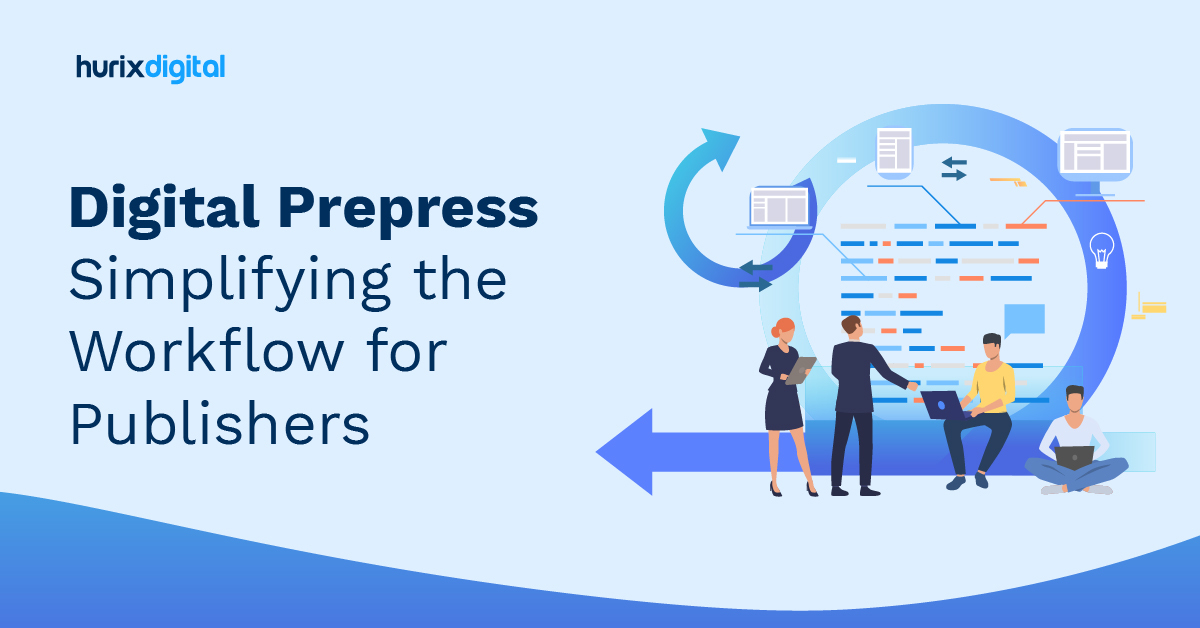
The 5-Step Prepress Checklist: Your Key to a Successful eBook Publication
Summarize with:
Prepress plays a key role in making your final work ready for publishing, be it magazines, textbooks, or fiction novels. Nowadays, a lot of writers are taking the self-publishing route for their books and prepress plays an even more crucial role.
An expert prepress service can make the job easier for you by reducing the turnaround time, while at the same time, making sure you get the design, typesetting, and proofreading services that put your work on par with the industry standards. Prepress is the most important bridge between a potent manuscript and an international bestseller.
Table of Contents:
Today, creativity and talent are often not enough to guarantee success; execution and presentation play an equally important role, if not more. For those reasons, a lot of publishers consider outsourcing all this work to prepress experts. E-book publishing comprises of several stages, from high-quality digitization using the right tools and technology to image formatting, copy editing, and indexing.
A team of prepress professionals manage the entire gamut of this publishing process, from fixing the layout, getting the typesetting right, pagination, to making sure the design and graphics are up to the standard.
https://www.youtube.com/embed/Nd371rM-uFo?si=yFAtoZk9U8ZlNBiN
Therefore, it’s convenient to have a prepress checklist regardless of whether you are self-publishing your eBook or going through the traditional publishing route.
Prepress Checklist for eBooks
1. Typesetting
The last thing you need your eBook to have is clutter. You want your readers to have an enjoyable experience while reading, and not be lost in the clutter created by a confusing layout. A neat and tidy layout enriches the reading experience and makes sure your readers are in the mood you want them to be in when they read your e-book. Typesetting is the careful arrangement of text and images to create an appealing design that would enhance the reading experience.
It is important to use industry-standard tools, techniques, software, and platforms available in the market at the prepress stage. Seasoned typesetting professionals use the latest software solutions, like InDesign, 32B, and Quark, to provide you with the page layouts that don’t just suit your work, but also make them ready for print or publishing. As far as composition is considered, using services like XML First Workflow is advised.
2. Copy Editing
There is a critical difference between just plainly jotting ideas and bringing them to life. The latter requires immaculate perfection in terms of syntax, semantics, and grammar. And for those reasons, thorough and comprehensive copy editing is very important, to give your e-book a professional touch. Sometimes, there may just be a minor spelling mistake that’s barely noticeable, which is where a professional proofreader comes into play. Therefore, performing a spell check on every word is of the utmost importance at the prepress stage.
The role of copy editing isn’t only limited to checking your e-book from a spelling and grammatical point of view. It extends to looking at your work from various other angles like research precision, color corrections, and positioning. For instance, if your writing is non-fiction, it is preferable to have your facts validated and cross-checked from other sources, and this job also comes under the purview of copy editing. Similarly, color correctness also plays a very important role in determining the final quality of your e-book.
3. Illustration and Artwork
It is a known fact that a picture is worth a thousand words. And in the absence of the right graphic design, imagery, and illustration, your work may lack the impact it is capable of. Having a professional for the aforementioned needs is a must, more so in the case of storybooks for children, where pictures play a vital role in getting the message across. Generally, a trained graphic designer is enough to do this job, but in certain cases, you may need the assistance of an experienced illustrator as well.
The technical skills involved in fixing the artwork of your e-book comprises image resizing, pixel management, image enhancement, retouching, reproduction, and graphics creation. Therefore, it is important to look for someone who has hands-on experience in Photoshop, Illustrator, InDesign, and CorelDraw. If your final output is not limited to an eBook, then it is also advisable to consult someone who understands the nuances of studio printing.
4. Formatting and Compatibility
We live in a digital era where everyone has a different preference when it comes to gadgets. Therefore, it becomes important to focus on the format of your e-book. While there are different formats available for e-books like MOBI and EPUB, PDF is the most common format across all devices. As important as it is to make sure that your book is print-ready in PDF format, it is, however, also essential to ensure that your e-book is tailored to be compatible across all devices.
When it comes to mailing high-resolution PDFs of your e-book, e-mail doesn’t cut it, because of the large file size. And it becomes a headache to send PDFs to different parties involved in the prepress process. Fortunately, sending these large files is possible through a web-based service provided by Adobe, which offers online storage to save high-resolution files. It also allows you to create a short URL for your PDF that can be shared on your website or blog.
5. Indexing
Indexing in e-books is much simpler when compared to their printed versions. This is because e-books allow hyperlinking of the index to the corresponding pages and or chapters in the book. Therefore, it helps to design an intuitive and user-friendly index page for the reader. And at the prepress level, it becomes very important to distil what’s needed on the index and what needs to be omitted. Accordingly, sections and subsections can be created for the e-book.
Book indexing is an art, and it is important to have someone skilled, experienced, and well versed with the complete prepress process. The method of determining the relevance of the text to the topic of the book is a skill that comes with experience and considering a seasoned professional for this job is necessary. It also helps to have someone with expertise in UX as an advisor.
Conclusion
In conclusion, this prepress checklist consists of all the ingredients that ensure your secret recipe turns into a household dish, your doodles become an acclaimed masterpiece, and your scribbles – an international bestseller. Thus, it is recommended to consult a prepress expert before publishing an e-book.
Get in touch with Hurix Digital experts.
Summarize with:

Vice President – Content Transformation at HurixDigital, based in Chennai. With nearly 20 years in digital content, he leads large-scale transformation and accessibility initiatives. A frequent presenter (e.g., London Book Fair 2025), Gokulnath drives AI-powered publishing solutions and inclusive content strategies for global clients
 Upcoming Masterclass | Build an Army of Brand Evangelists using Training & Development | November 20th, 8:30 AM PDT | 11:30 AM EDT | 10:00 PM IST
Upcoming Masterclass | Build an Army of Brand Evangelists using Training & Development | November 20th, 8:30 AM PDT | 11:30 AM EDT | 10:00 PM IST



